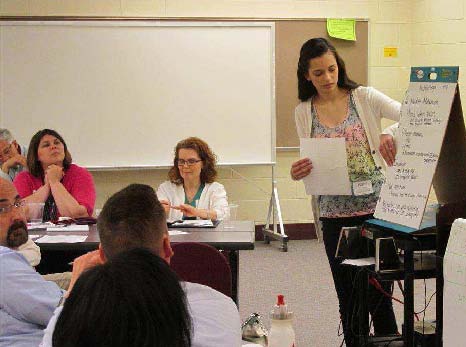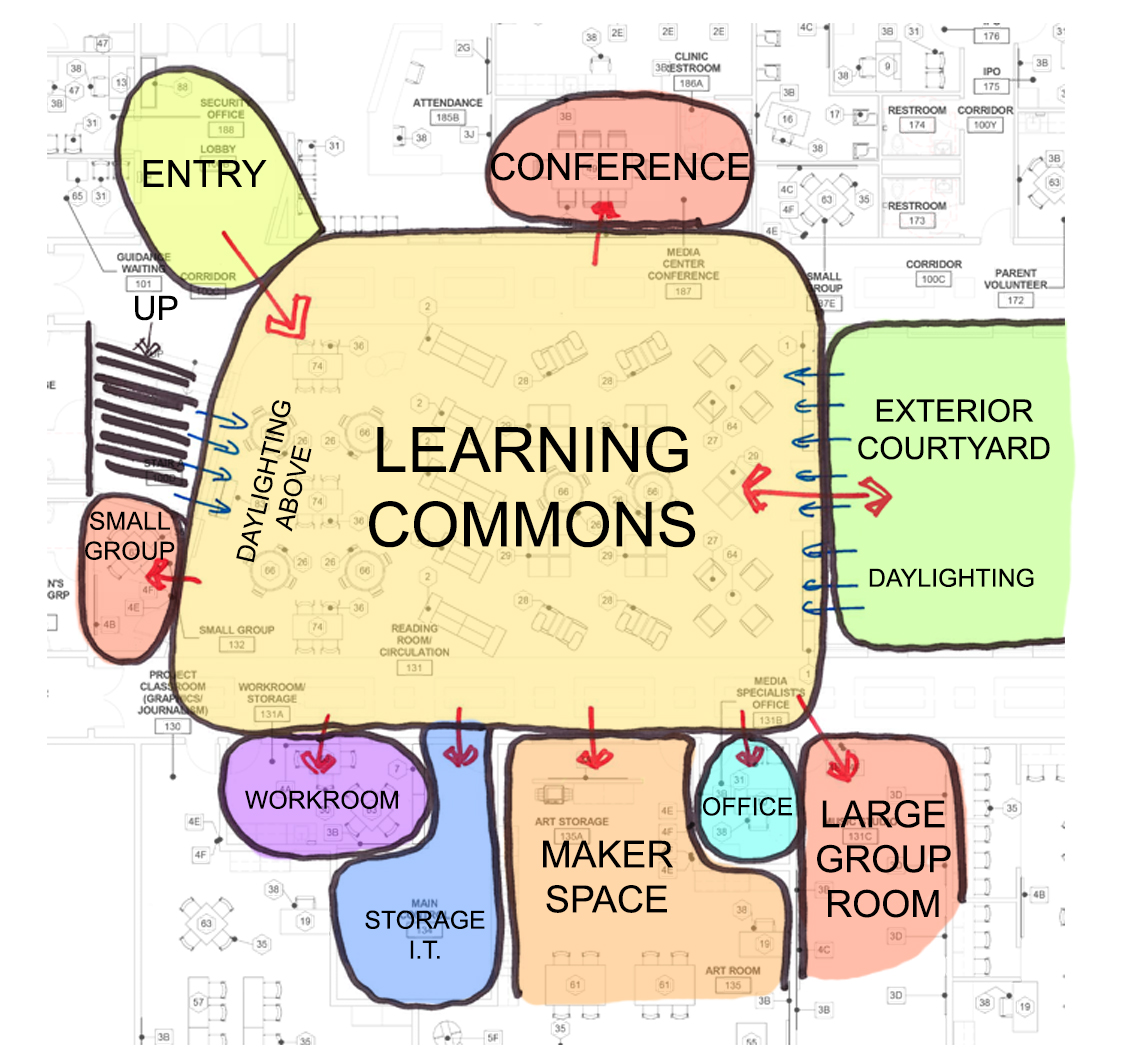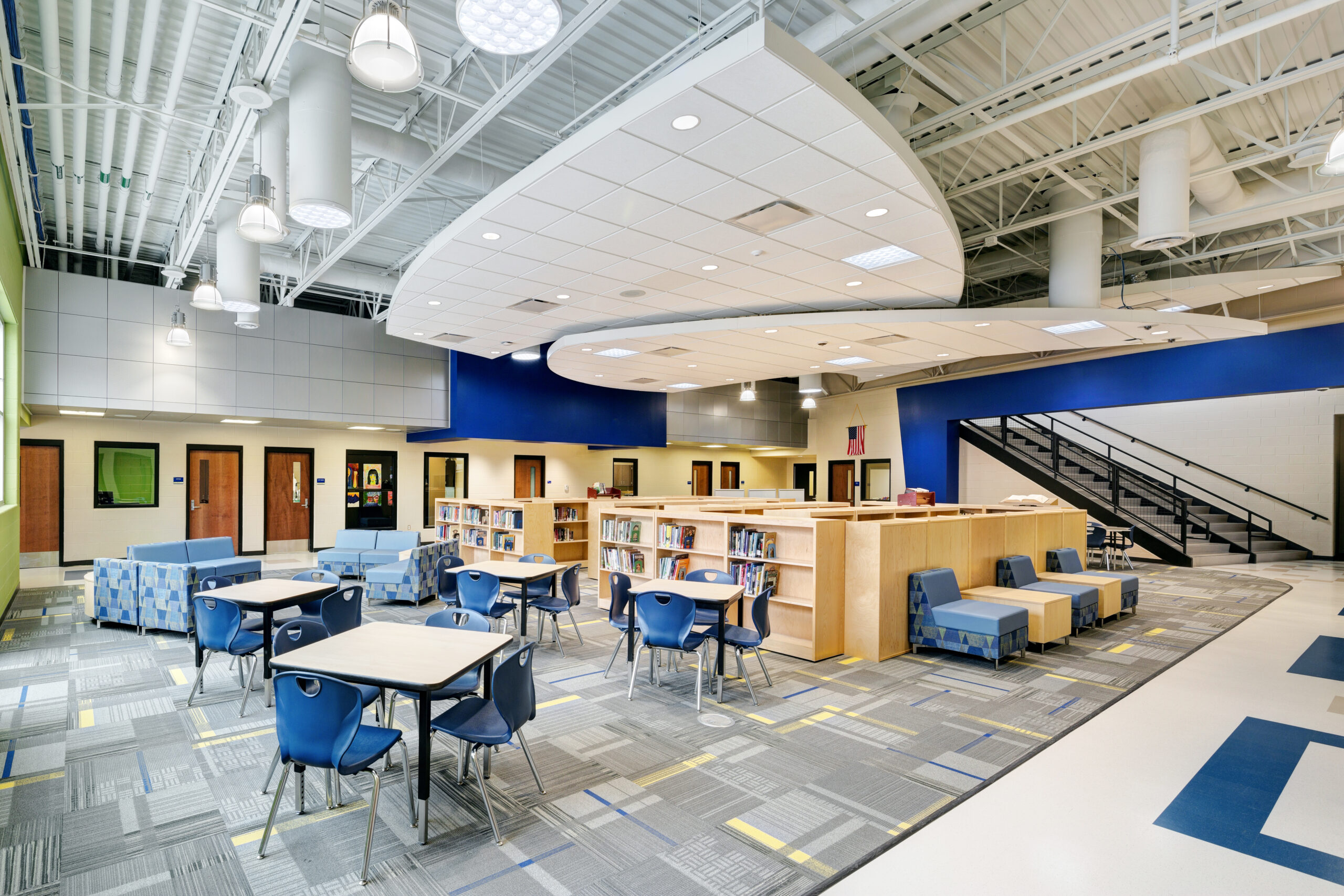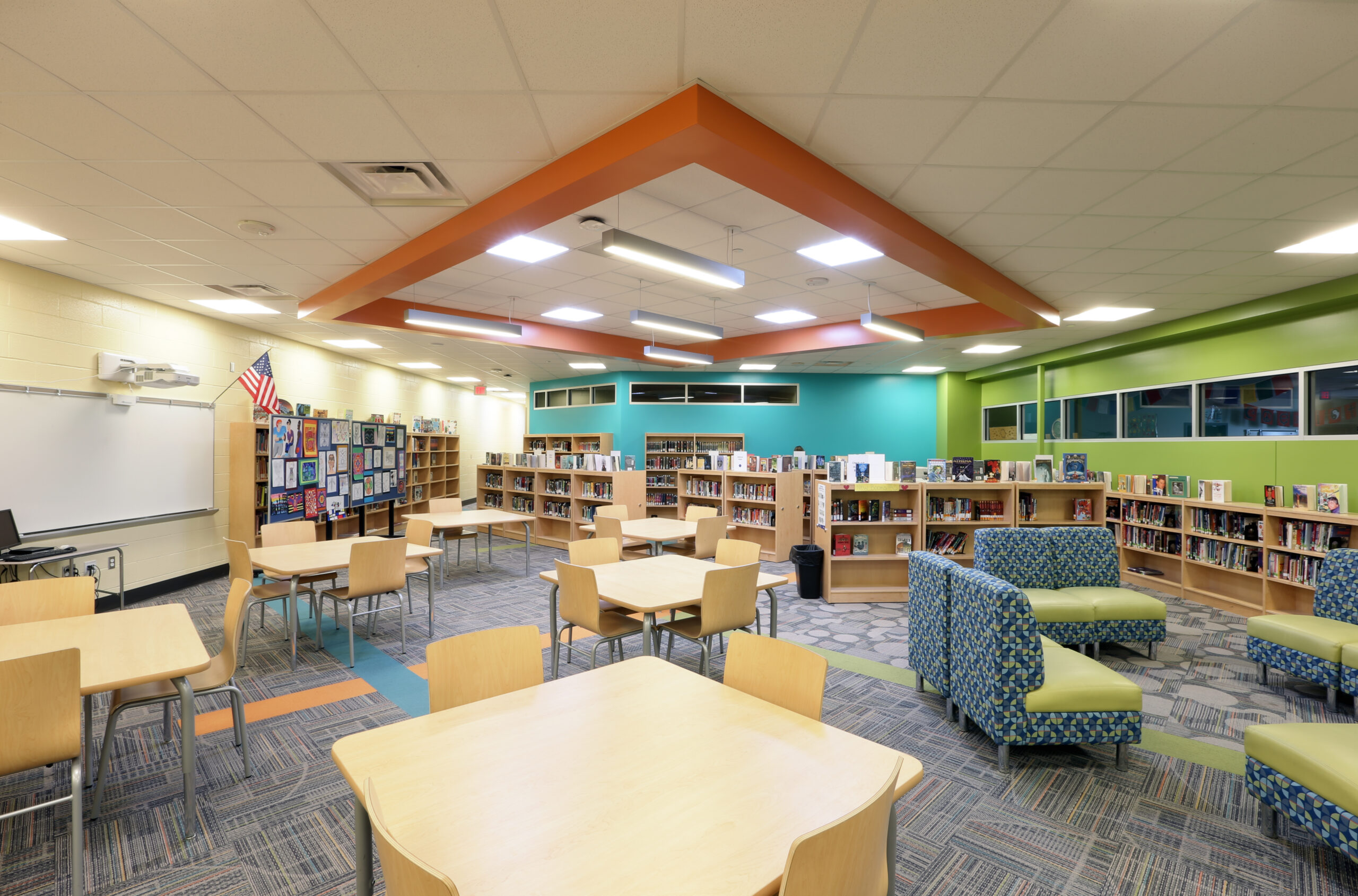We recently checked in with Media Specialist, Lori Thomson, to see if the centers are functioning as we all intended after their first couple years in use. The opportunities the District has realized proved to be even more than we had imagined.
Our 21st century design for the high school media center focused on an open, centralized space that is located near the main entry, an exterior courtyard space, and connection to the student dining area. We surrounded the open media center with a dedicated conference room, small group rooms, an art room, and broadcast rooms to extend the reach and use of the media center area. From the early concepts, we continued to work closely with the school district to refine the plans and programming connections. Lori noted that the location works well for a variety of reasons. The staff can utilize the conference room with direct connection to the media center. They can also coordinate with students in the small group rooms, while the remainder of the group can remain in the open area. Students in the dining area often come over to the media center space to read, work on tasks, or lounge. When the weather is nice, students can also enjoy the adjacent courtyard, which provides natural light directly into the media center. With its proximity to the main entry, the media center is also used as a gathering space for special events.


For the younger students at the middle school, the 21st century hub concept was applied to an enclosed media center in an existing, centralized space located between two major corridors. Lori noted that the media center receives a great amount of traffic from students, teachers bringing in classes, and also individuals passing through to reach the opposite corridor. The connection between the two corridors is seen as a positive because it brings through individuals that might not typically visit the media center. Having the media specialist desk located so that the attending individual can see the entry doors was also an important feature. The space has the proper area for book shelves, seating, an open office, and even a tinker space in the corner to allow for future STEM use by the district.


Thank you, Lori, for this opportunity to obtain user insight of these two innovative spaces. Hearing the successes of daily use and the attraction these spaces provide for the students is a great confirmation to us as designers that 21st century education is not only being embraced, but is an effective tool to engage students.

